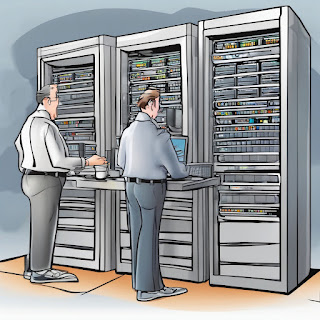Microservices architecture has revolutionized software development, offering greater flexibility and scalability compared to traditional monolithic approaches. By breaking down large applications into smaller, independent services that communicate and work together, microservices enable faster development cycles, improved resource utilization, and enhanced resilience. However, this distributed nature also presents unique challenges for product managers.
Modularity: Microservices are modular, allowing for independent updates and scaling of services.Decentralization: Each microservice can utilize different technologies and databases, fostering flexibility.Independent Deployment: Microservices can be deployed independently, reducing the risk of impacting the entire system during changes.
Managing a large number of independent services: Orchestration and coordination become crucial to ensure smooth operation.Complex and unpredictable inter-service communication: As systems scale, communication between services can become intricate.Maintaining data consistency across services: Each service may utilize different databases, leading to specific challenges.
CI/CD Pipelines: Implement continuous integration and continuous deployment (CI/CD) pipelines to automate testing and deployment processes, ensuring seamless integration and rapid release cycles.Automated Testing: Utilize automated testing frameworks to guarantee each service functions correctly and integrates seamlessly with others. This ensures quality and minimizes the risk of errors.Service Isolation: Design services to be isolated and independent, enabling individual scaling and updates without affecting other services. This minimizes the impact of changes and fosters greater flexibility.API Gateways: Employ API gateways to manage and secure inter-service communication. This improves security, performance, and control over communication.Robust Monitoring: Implement comprehensive logging, monitoring, and alerting mechanisms to gain insights into service performance. This allows for proactive identification and resolution of potential issues.
Open Communication: Encourage an environment of open communication and collaboration through regular cross-team meetings, discussions, and knowledge sharing.Documentation: Establish clear documentation for each service, outlining its functionalities, dependencies, and integration points.DevOps Practices: Embrace DevOps principles, which integrate development and operations workflows, promoting a shared responsibility model.
Automated Testing: Utilize automated testing frameworks to ensure consistent quality and streamline the testing process.CI/CD Pipelines: Employ CI/CD pipelines to automate the deployment process, ensuring rapid and efficient releases.
Distributed Tracing: Track requests across different services to understand how they interact, pinpoint bottlenecks, and optimize performance.Log Aggregation: Use tools to collect and analyze logs from all services, providing insights into system behavior and troubleshooting issues.Key Metrics Monitoring: Monitor response times, error rates, and throughput to track performance, identify performance degradation, and make necessary adjustments.Health Checks: Continuously verify the operational status of services through regular health checks, ensuring continuous availability.Alerting Systems: Set up alerting systems to notify teams of performance issues or failures, enabling prompt response and resolution.




0 comments:
Post a Comment